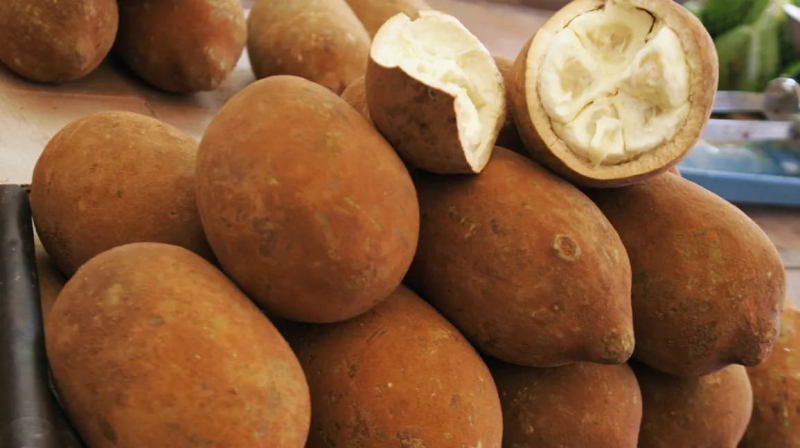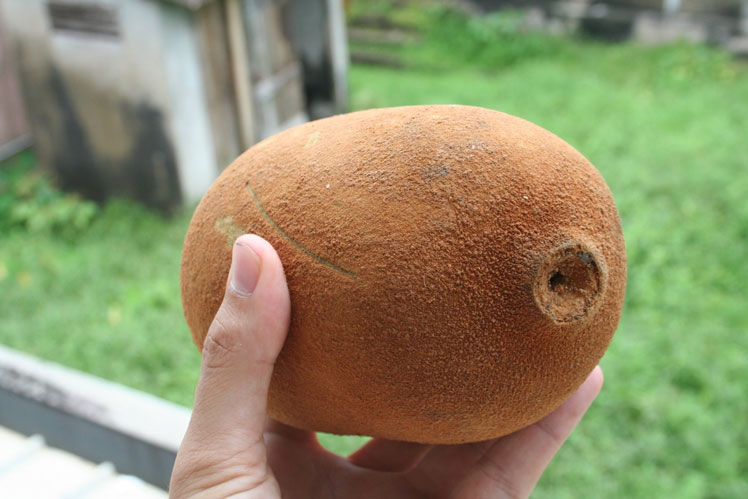Cupuacu
Cupuaçu (Theobroma grandiflorum), also known as cupuassu, is related to the cacao tree. Native to the Amazon, this tree grows up to 65 feet (20 meters) high. Its fruit is the national fruit of Brazil, which is the world’s largest cupuaçu producer. The fruit is ovular with a brown rind and white, fleshy pulIts flavor is compared to chocolate with hints of tropical fruit like melon or pineapple. Cupuaçu is commonly used in desserts or pressed into a juice. In addition, its seeds are pressed to extract a nutrient-rich fat that’s used as a cooking oil or beauty treatment.
The majority of cupuaçu trees are self-incompatible, which can lead to decreased pollination levels and, as a result, a decrease in fruit yields. Pollination can also be negatively impacted by environmental factors. Cupuaçu flowers are structurally complex and require pollination from biotic vectors. Heavy rains prevent pollinators, such as chrysomelid weevils and stingless bees, from flying between flowers. The juice primarily tastes like pear, banana, passion fruit, and melon. Chocolate made from cupuaçu, which is very similar to chocolate made from cocoa, is known as cupulate.







